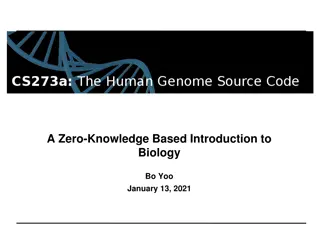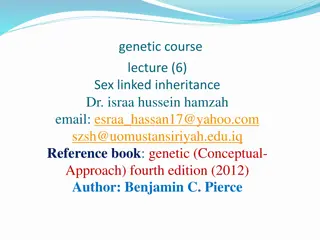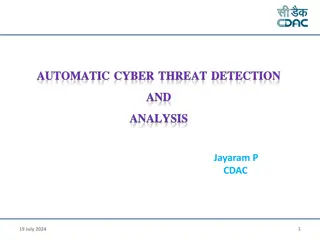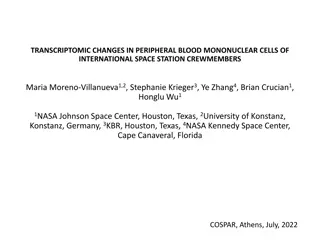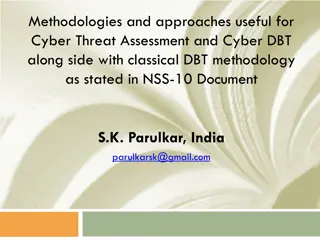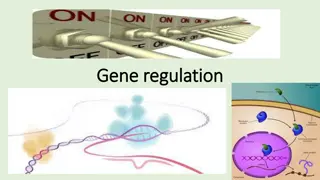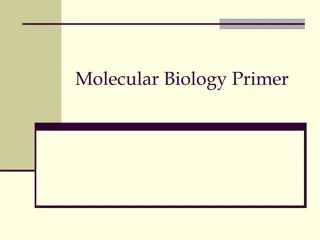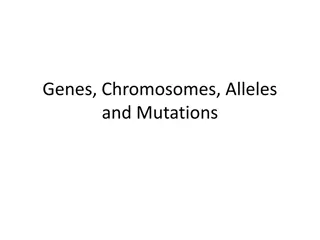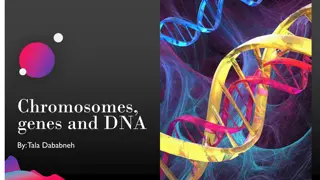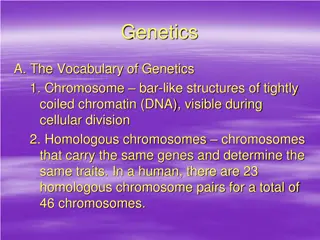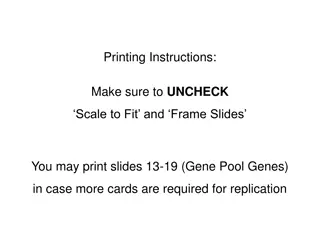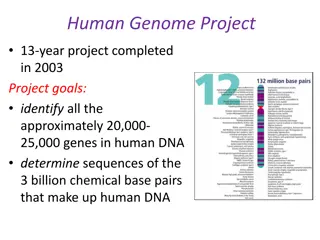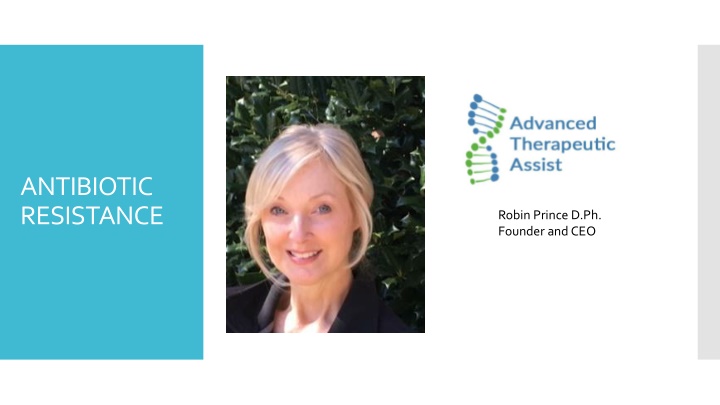
Antibiotic Resistance: Threats, Detection, and Solutions
Explore the serious global health threat posed by antibiotic resistance, the importance of accurate pathogen identification and resistant gene detection in treatment selection, and the critical need for improved antimicrobial stewardship. Learn about the rise in drug-resistant infections, the impact on mortality and healthcare costs, and the role of PCR testing in combating this crisis.
Download Presentation

Please find below an Image/Link to download the presentation.
The content on the website is provided AS IS for your information and personal use only. It may not be sold, licensed, or shared on other websites without obtaining consent from the author. If you encounter any issues during the download, it is possible that the publisher has removed the file from their server.
You are allowed to download the files provided on this website for personal or commercial use, subject to the condition that they are used lawfully. All files are the property of their respective owners.
The content on the website is provided AS IS for your information and personal use only. It may not be sold, licensed, or shared on other websites without obtaining consent from the author.
E N D
Presentation Transcript
ANTIBIOTIC RESISTANCE Robin Prince D.Ph. Founder and CEO
Clinical value of PCR testing and Resistant Gene Detection for infectious disease The emergence of antibiotic-resistant bacteria poses a serious threat to global health the fight against antimicrobial resistance (AMR) is the effective correct use of antibiotics. The accurate identification of infectious pathogens (e.g. viruses, bacteria, and fungi) is necessary for antibiotic drug selection and treatment effectiveness where target therapy replaces empirical therapy. Clinical Value New advances in genetic analyses of microbial DNA have enabled the identification of microbial species and AMR genes that confer resistance to particular antibiotics Cost associated with the rise in treating resistant infections, pathogens, is costing healthcare thousands of dollars with added burden of no new antibiotics being developed from pharmaceutical industry due to cost associated in research and development in this area. These genetic methods have major advantages over traditional cell culture methods. Faster: 8 hours vs 3-5 days Greater accuracy: 99.8% accurate vs 70% accurate Can identify AMR genes that can guide effective antibiotic drug selection
Why antibacterial resistance is a REAL concern Mechanisms of resistance Why gene resistance therapy is important to you Discussion ESBL,VRE, CRE, and MRSA rise in resistance and associated cost Target patient specific therapy makes a difference saves lives How PCR and Resistant Gene Detection is replacing the gold standard in step towards better antimicrobial stewardship and quicker response time to the threat with better accuracy.
Antimicrobial Resistance AMR is one of the most serious public health threats of the 21st century Resistance has become a major source of morbidity and mortality worldwide. Drug-resistant infections caused 50,000 deaths in Europe and US as well as 700,000 death worldwide. Antimicrobial Resistance a worldwide crisis *2016 report by Review of Antimicrobial Resistance.
Leads to treatment failure Increased mortality Resistant bacteria can spread in Community or Long term Health facility Added burden on healthcare cost Pharmaceutical companies have essentially stopped making new antibiotics Why should we be concerned with Antibiotic Resistance?
As often as 50% of the time, physicians prescribed antibiotics unnecessarily or incorrectly. Pathogen identification and antibiotic resistance characterization are key for appropriate treatment selection in infectious disease. Known Statistic This is why the gold standard is quickly being replaced with PCR testing.
In the absence of concerted global action, the authors estimate that up to 10 million people may die annually by 2030 as a result of drug-resistant diseases. Our antibiotics are no match for superbugs, and it's a 'global crisis,' UN report says Two million Americans develop antibiotic resistance infections each year, and 23,000 die from those infections, according to the US Centers for Disease Control and Prevention. The new report emphasizes that misuse and overuse of existing antimicrobial agents in humans as well as animals and plants accelerate the development and spread of resistance. Factors contributing to the emergence and spread of drug-resistant pathogens include inadequate access to clean water, sanitation and hygiene; poor infection and disease prevention; lack of equitable access to affordable antimicrobials, vaccines and diagnostics; and weak health, food and feed production, food safety and waste management systems.
Three urgent threats in the United States In the United States, the CDC describesthree "urgent" antimicrobial resistant threats: C. difficile or C. diff, which causes life-threatening diarrhea and colitis (an inflammation of the colon) in, mostly, patients who have recently been given antibiotics, infects 500,000 people annually and leads to 15,000 deaths. Carbapenem-resistant Enterobacteriaceae (CRE), which is known as the "nightmare bacteria" and is usually acquired in health care facilities, causes 9,000 infections and results in about 600 deaths annually. Finally, N. gonorrhoeae, which causes the sexually transmitted disease gonorrhea and has developed resistance to antibiotics, infects 246,000 people each year. Urgent threat in United States Meanwhile, the World Health Organization reports that the number of drugs in development is simply not enough. Although dozens of antibiotics and biologics -- medical products made from natural sources -- may be in the pipeline, new drugs have just a 14% chance of gaining approval for use in humans.
For these reasons we must do everything we can to preserve our precious antibiotics . PCR- with target therapy eliminates the use of wrong antibiotics A resistant gene detection panel along with pharm d guidance can help preserve our existing antibiotics and make a real difference! This team based approach to delivering optimal healthcare through expert guided pharmacotherapy with PCR technology is literally a life saver. Target Therapy
Methods of Resistance (How the bacteria out smart the antibiotics) Intrinsic (Natural) Innate ability of a bacterium to resist a class of antibiotics, always expressed in the species. Acquired Genetic Methods The microorganism acquires ways to avoid being affected by the antibiotic. LIMITING UPTAKE OF DRUG MODIFICATION OF DRUG TARGET INACTIVATION OF THE DRUG ACTIVE EFFLUX OF A DRUG
How Bacteria keep our existing antibiotics from working
Targets and Resistance
Resistant Genes Enzymes for Beta- Lactams
Dfr- Sul: Sulfamethoxazole and Trimethoprim Erm A,B,C: Macrolides, Lincomycins Examples of other resistant genes tested by PCR KPC: Carbapenems Gyrase: Quinolones Qnr: Quinolones TetB, TetM: Tetracycline, Doxycycline, Minocycline VAN: Vancomycin
What is extended spectrum beta-lactamase? Some germs, such as Escherichia coli (E. coli) and Klebsiella, produce an enzyme called extended spectrum beta-lactamase (ESBL). This enzyme makes the germ harder to treat with antibiotics. ESBL can be found in Urine, Wound, Respiratory, and Blood infections. ESBL What is the difference between being colonized and being infected with EBSL? A person can be either colonized or infected with ESBL. If a person is colonized, it means that the germ is present on their skin or in a body opening, but they have no signs of illness. If a person is infected, it means that the germ is present on their skin or in a body opening and it s causing illness.
How is ESBL spread? Most ESBL infections are spread by direct contact with an infected person s bodily fluids They can also be spread by contact with equipment or surfaces that have been contaminated with the germ. Who is at risk for an ESBL infection? ESBL infections occur more often in people who: ESBL Are older Have weakened immune systems Have chronic illnesses, such as cancer and diabetes Had a recent surgery Have had repeated or long hospital stays Have open wounds or sores Have tubes or drains in their body This is why LTC facilities quarantine the patient for ESBL s
These Resistant Genes are also problematic and cause serious threat to the patient: MRSA VRE CRE ESBL MRSA methicillin resistant Staph aureus VRSA vancomycin resistant Staph aureus VRE vancomycin resistant Enterococcus CRE carbapenem-resistant Enterobacteriaceae ESBL s
Lets all strive towards a team approach to battle these global threats, to preserve our antibiotics, help lower the rise in health cost, and to ultimately prevent death. Peer to peer informative discussions with state of the art diagnostic tools together are a step in the right direction and a tool in your tool box to make a difference and save lives!


